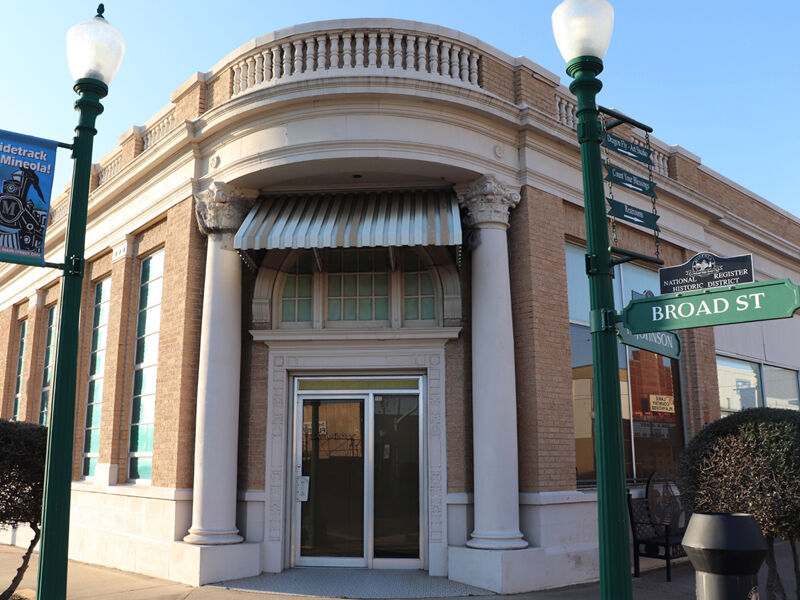By Lisa Tang
The city of Mineola offers a variety of architectural gems built during its past 140 years as a transportation center and railroad hub. Far from a relic of the past, the city continues to lure visitors with its unique charm.
Landmark historic buildings in downtown Mineola are in use today and Union Pacific and Amtrak trains continue to rumble through town.
The exceptional condition and historic significance of buildings in the Main Street District earned Mineola a spot in the National Register of Historic Places.
The buildings represent characteristics of the cultural and economic era of their time, while the Main Street program’s success reveals city leaders’ dedication to preserving the town’s past.
“Our goal is to preserve that look of downtown that makes Mineola unique,” says James Phillips, chairman of the Mineola Landmark Commission. “The people that live here love the downtown area, and our goal is to try to preserve that so future generations can enjoy.”
In 1873, two railroads raced to build lines through the town to make Mineola a railroad junction. Building to the north from Tyler, the International-Great Northern Railroad finished building its tracks 15 minutes before the Texas and Pacific Railroad laid its east to west line through town.
Later when the Katy Railroad built a line from Mineola to Greenville in 1881, people could travel from Mineola in any direction.
The town’s commercial district just north of the tracks at first represented a western boomtown, but a fire in the 1880s destroyed 18 of the town’s original buildings.
The town’s commercial success in the following decades provided capital for today’s enduring landmarks.
Mineola’s role as a transportation hub helped the town weather even the Great Depression of the 1930s. The Texas & Pacific Railroad made Mineola a home terminal in 1929, bringing more jobs to the town.
“In 1929 that was an economic boom because it happened right before the Depression hit,” Phillips says. “Hundreds of employees moved to Mineola to work on the railroads.”
The Texas & Pacific Railroad continued running its trains through town until the 1990s.
In recent years, city leaders continue to promote their heritage by restoring the town’s original character.
The street lamps lining the streets today are not original, but are intended to replicate ones installed as early as 1929 when the city began burning them to guide railroad workers going to work at night and in the wee hours of the morning.
Iron benches, historical markers, a large gazebo, and beautiful outdoor murals are other effects that continue to lure visitors to explore Mineola.
The downtown historic district includes many commercial and civic buildings ranging from one to three stories in height as well as brick streets. Brick is the dominant exterior material within the district with most buildings having commercial storefront of cast iron, wood, or aluminum-inflamed glass. A few buildings have notable influences of late-19th and early 20-century architectural styles, including Italianate, Classical Revival, Beaux Arts, and Art Moderne.
First National Bank Building
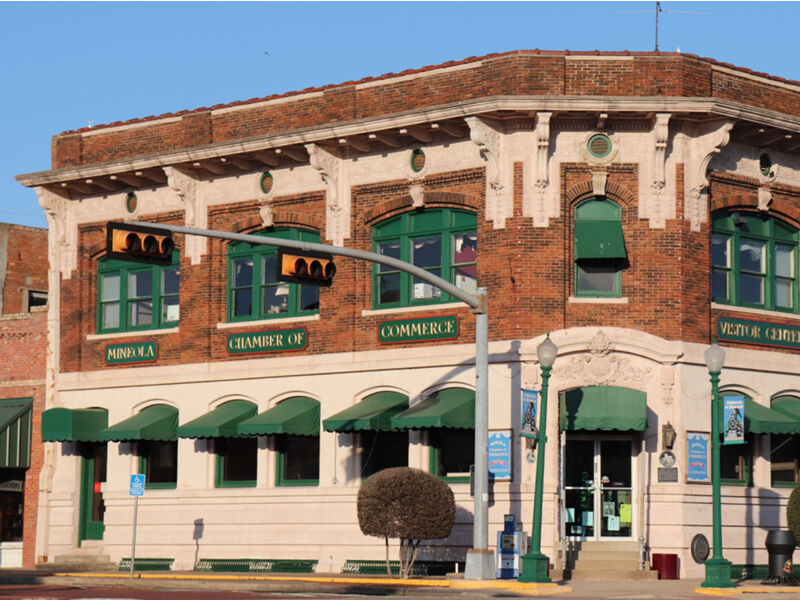
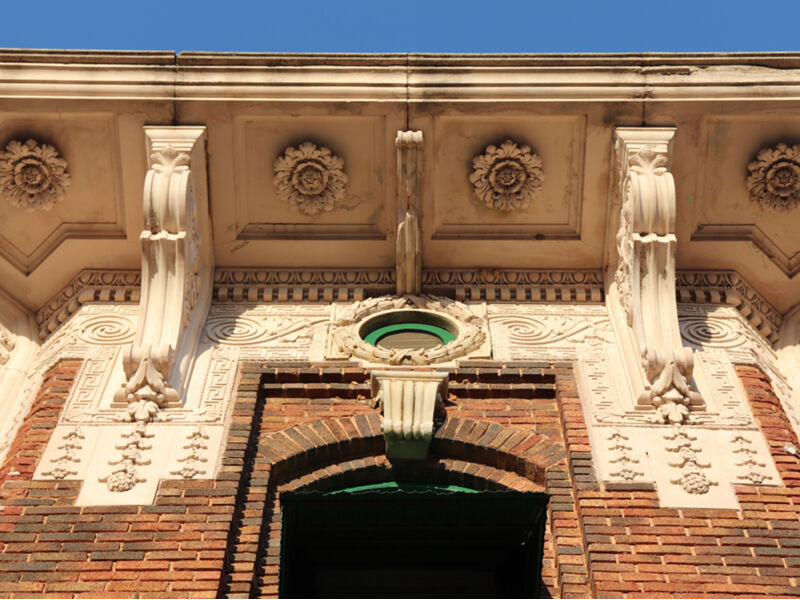
The Mineola Chamber of Commerce building was erected in 1912 as the First National Bank Building in the ornate Sullivanesque style and has not been altered.
Architect Louis Sullivan of Pennsylvania (1856-1924) used ornate embellishments to decorate tall buildings and skyscrapers in the early 20th century. The building follows Sullivan’s tripartite design with a distinct entryway, a midsection with vertical windows, porthole windows near the top and a decorative cornice at top.
This building was built over a natural spring that runs through downtown Mineola. Pumps were built in the basements of the First National Bank building and at least two other buildings that endure today — the First Baptist Church and the old post office. In the town’s early days a pump supplied water at a well at the corner of Johnson and Broad streets.
Mineola Depot Museum
Built in 1905, the Mineola Depot Museum houses a small transportation museum. Though a remodel in the 1950s removed the depot’s historic character, it is now restored to its original look. Phillips says that after World War II, many cities and towns wanted to erase the historic character of their towns to make them look more modern.
“It was remodeled in the 1950s after World War II because old was [considered] bad,” Phillips says.
Though the Texas & Pacific Railroad stopped running its trains through Mineola in the 1990s, the town became an Amtrak stop in 1996, where passengers can board and ride to Dallas, San Antonio, El Paso, and as far west as Los Angeles. Union Pacific trains also continue to carry supplies between Longview and Dallas.
City leaders restored the depot to its original form in 2005, rededicated it in 2006, and have since installed a museum with a 1930s model train and other reminders of the era.
Beckham Hotel
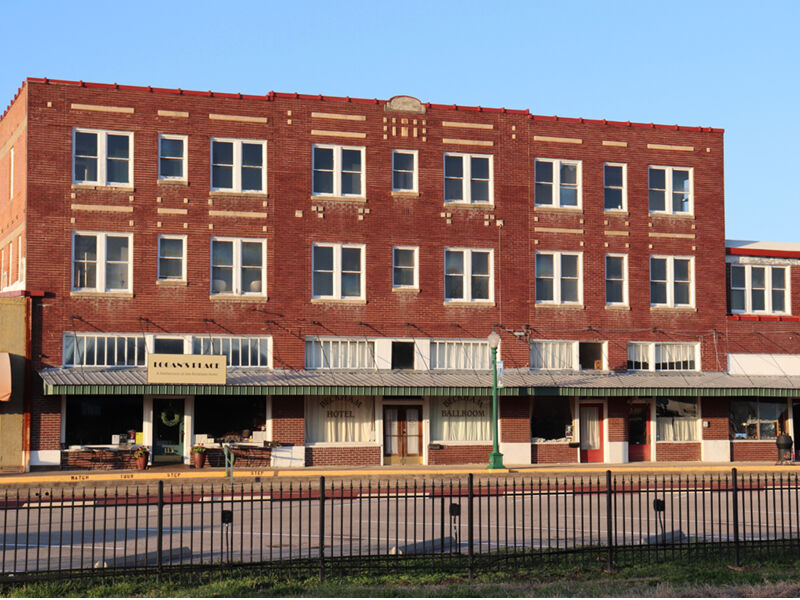
The Beckham Hotel stands across the street from the depot. The three-story brick facade hotel was rebuilt in 1928 after a fire destroyed it. The building contains a ballroom on the second floor, and efforts are currently underway to restore it for commercial use. Logan’s Restaurant opened on the bottom floor of the hotel in 2019.
Mineola Historical Museum
Mineola’s former post office at 114 North Pacific Street was built in 1937 by the Works Progress Administration in the Art Moderne Style popular in the 1930s. Its architecture features geometric forms with stylized and horizontal detailing around the tall windows. After the post office moved to a new location, the City of Mineola purchased the building and it now houses the town’s historical museum.
An outstanding feature in the original post office was a mural by artist Bernard Zacheim painted in 1938. The artist’s son or grandson later recreated it for the current museum. Titled “New and Old Methods of Transportation,” the mural celebrates Mineola’s role as a railroad center and represents different types of transportation through American history.
Kitchens Hardware
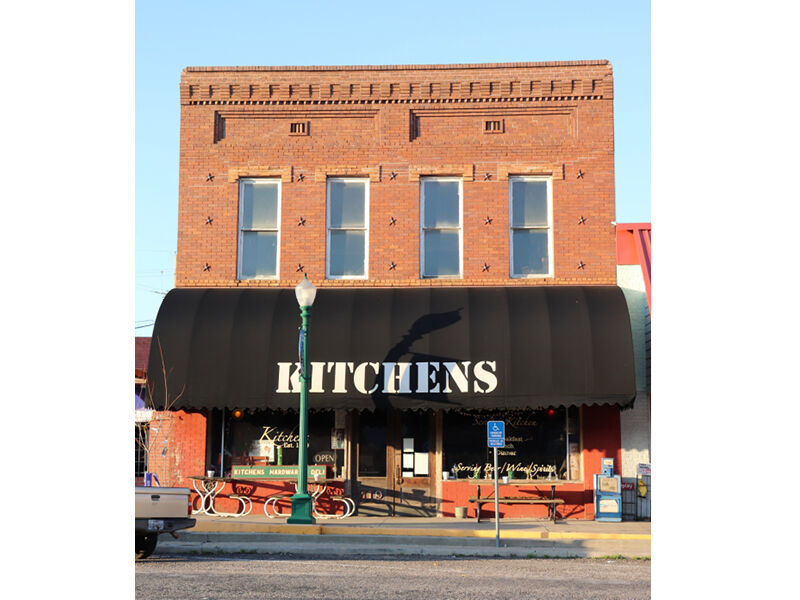
Formerly known as Kitchens Hardware, the building at 119 East Broad Street now houses Kitchens Restaurant, the town’s oldest operating business.
The Kitchens family started a hardware store in 1899 and continued through the 1980s when a new owner converted the store into a restaurant that displays local memorabilia.
Phillips, whose family has lived in Mineola and the surrounding area for generations, says Kitchens was the go-to place for necessities.
“If you needed it, they had it. That’s what my grandfather used to say,” says Phillips, whose maternal and paternal grandfathers were engineers for the Texas & Pacific Railroad.
Today’s clientele rave about the good homestyle food served at Kitchens, which provides indoor and outdoor seating and a full-service bar.
Henry Hotel
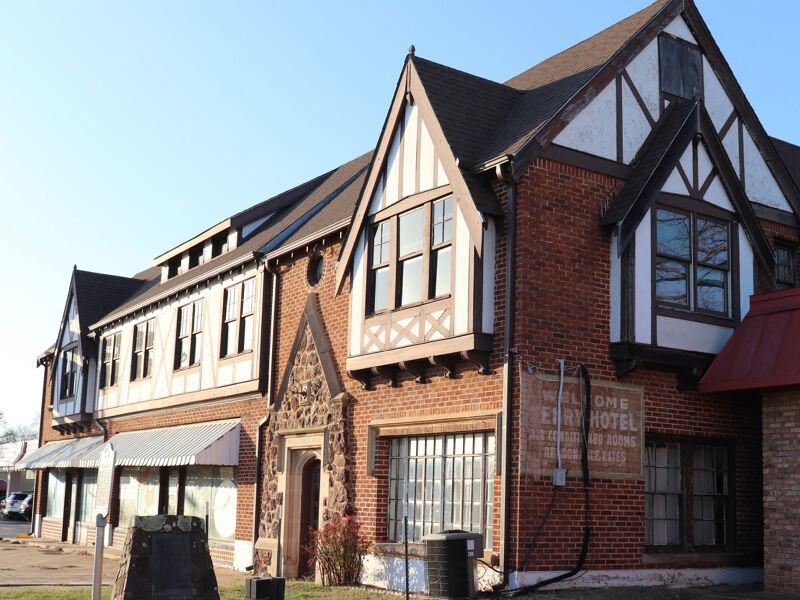
The Henry Hotel at 206 West Broad Street was built in the English Tudor Revival style popular in the 1920s with half timbering, brick and stucco veneer, and distinct stone entryways. The Henry Hotel has housed many businesses through its 100-year history.
Visitors can see a pyramid-shaped stone historical marker placed for the 1936 Texas Centennial that commemorates the site where Texas governor James Hogg had a law office.
The Hogg family lived behind the hotel’s present location, where Ima Hogg was born in 1882. He started in journalism in Longview but Wood County recruited him to represent the city’s interests during the early days of the railroad before they became a common transportation mode.
Shortly after Ima’s birth, the family moved to Tyler in the 1880s, where Hogg’s early career took off. Hogg later became the first governor of Texas actually born in the state.
Iron Horse Square
Iron Horse Square celebrates the town’s history with recreational activities for kids and adults alike. The square is located just west of the depot. It offers train rides in a 15” gauge replica of a Union Pacific train, a railroad-themed playground, and a gazebo built around 1996. Construction of a walking trail is in progress.
For more information about Mineola’s history, visit the Mineola Historic Museum’s website. The museum is open 10 a.m. to 3 p.m. every Thursday and Saturday.

